Tainan is known throughout Taiwan for its food—but deciding where to eat can be somewhat daunting, especially for anyone who doesn’t very much Chinese. There are literally thousands of restaurants to choose from—in addition to the many night markets scattered around the city. Taiwan, like any highly digital and developed nation, has a vast number of restaurant reviews online, but it isn’t practical to sift through all those reviews without some degree of fluency (or a lot of patience with the shoddy state of machine translation). And, to be honest, I would much rather know how to find good food than read specific restaurant reviews. I didn’t know much about Tainan’s cuisine when I moved there for three months last spring—so with this post I mean to give you the benefit of my experience as a mostly illiterate foreigner attempting to hack the system and eat well in Taiwan’s historic old capital.
Note: this post is old, and it was written when I didn’t know very much about Taiwan or Taiwanese cuisine. Many of the eateries mentioned here are no longer in business, others have moved. Please keep this in mind when reading this post! Now back to the original post from 2014…
Finding good local fare in Tainan without doing any advance research isn’t actually that hard. All you have to do is keep your eyes open and have some idea what to look for. Tainan isn’t known for upscale, fancy, or westernized dining. No, Tainan’s cuisine is very working class. You’ll find it on the street, in open air kitchens, at self-serve buffets, and at the various night markets around town. Just bike (or walk) around the city, explore its many side streets and crooked alleys, and watch for places that are an optimal mix of old, popular, unpretentious, and preferably not right next to the main tourist, nightlife, university, and red light districts1. Use common sense, in other words, and look for signs of success in competitive areas where repeat business matters.
In Tainan this simple approach tends to yield positive results more often than not. Most of the more traditional eateries are right on the street, and dining is al fresco, if you’ll permit my ironic use of this term to describe dining on rickety plastic furniture beneath a concrete awning next to a smelly scooter repair shop or open sewer grate. It is easy to assess the popularity and age of such places at a glance. If you don’t see a crowd at mealtime—keep moving. If you see a queue outside a grungy looking place on an otherwise unremarkable side street—get in line. It’s probably good, especially if the shop is decades old, though of course the local specialty might not suit your palate2.
Speaking and reading at least a little Chinese or Taiwanese will vastly improve your culinary experience in Tainan but don’t let any language barrier hold you back. Ordering food in Tainan without knowing any of the local languages3 is tricky but not impossible—especially not with the knowledge I am about to impart. And if all else fails you can always fall back on pointing at whatever looks interesting. Figuring out what’s popular at a given restaurant is as easy as looking around at what other people are eating. Even if you can’t speak a lick of Chinese the gesture for “I’ll have what they’re having” is universally understood.
Don’t expect to be able to cheat the way you can in Taipei. English is almost never spoken4 at any of the traditional eateries in Tainan nor are English menus common. Should someone hand you an English menu you can be sure that you’re in a place frequented more by tourists than locals. This isn’t necessarily a bad thing—many of the restaurants in tourist areas are also quite good—but if you truly want to eat like a local you’re going to have to learn to read menus.
Most menus in traditional eateries are posted on notice boards around the restaurant or above the countertop. Some places, especially noodle shops, also have order forms, some of which resemble spreadsheets. This way you can specify what sort of meat you’d like, what kind of noodles, and whether or not you want them served wet (tāng 湯; in soup) or dry (gān 乾; usually just a bit of sauce, but be careful how you pronounce this word, for gàn 幹 is a curse word in Taiwan). Price is a good gauge of portion size. You’ll find that most places serve snack-sized portions, also known as xiǎochī 小吃 (literally “small eats”), with a single serving setting you back anywhere from 30 to 90 NT (USD$1 to $3). Payment is usually conducted after the meal at sit-down places and before receiving your food at smaller stalls. Table service is typically limited to delivering your food—don’t expect to be waited on.
I have compiled a list of common dishes you’re likely to encounter on the streets of Tainan. I should warn you that I am no expert on Taiwanese cuisine, nor do I know a great deal of Chinese, so there are bound to be errors. I have included Chinese characters and Mandarin Chinese pinyin but some of these dishes are only known by their Taiwanese name (even amongst speakers of Mandarin Chinese in Taiwan). There are fewer resources for Taiwanese romanization and it is not something I know very much about so I have copied some information from Wikipedia where appropriate. I will also correct any mistakes that are pointed out to me in the next little while. So here you go, a few dishes to whet your appetite:
- Dan zai noodles (dānzǐmiàn 擔仔麵 or, lazily, 担仔麵; Taiwanese: da-a-mi); a famous snack-sized Tainanese noodle bowl; more info here.
- Minced pork rice (lǔròufàn 魯肉飯 or ròuzàofàn 肉燥飯; Taiwanese: lo-ba-bung); shredded meat, usually pork, and gravy over rice, often served with something pickled, but there are endless variations on this famous dish; more info here.
- Rice cake (mǐgāo 米糕); in Tainan this dish is often just minced pork rice with extra toppings; more info in Chinese here, here, here, and here.
- Chicken rice (jīròufàn 雞肉飯); exactly as described, though the real stuff is served with turkey (huǒjīròufàn 火雞肉飯, literally “fire chicken rice”).
- Beef noodle soup (niúròumiàn 牛肉麵); a Taiwanese mainstay, thick and hearty; more info here.
- Beef soup (niúròutāng 牛肉湯); this isn’t just beef noodle soup without the noodles—it’s fresh, rare beef served in hot broth, unusually expensive for Tainan (200 NT and up for the best stuff); more info here and here.
- Dongshan duck head (dōngshān yātóu 東山鴨頭); available all over Taiwan but the Tainanese variety is especially beloved by local people; I never tried it so I can’t say what it’s like; more info in Chinese here.
- Shrimp rolls (xiājuǎn 蝦捲); a delicious local specialty; more info here.
- Eel noodles (shànyú yìmiàn 鱔魚意麵); fried eel with noodles, another famous Tainanese dish.
- Milkfish belly soup (hīmùyúdùtāng 虱目魚肚湯); a bony, inoffensive fish typically served in a thicker soup with fried green onions and garlic.
- Oyster omelette (Mandarin: hézǐjiān 蚵仔煎; but people will say it in Taiwanese: ô-á-chian); a potato starch and egg pancake with oysters and green onion usually slathered with sweet sauce; more info here.
- Sticky rice in bamboo leaves (zòngzi 粽子); more info in Chinese here.
- Stinky tofu (chòudòufu 臭豆腐); exactly as it sounds—a fragrant dish that Taiwanese love to tease foreigners about; it’s more of a night market thing but you’ll see it (or smell it, rather) on the streets of Tainan as well; more info here.
- Bowl cake (Mandarin: wǎnguǒ 碗粿 but people say it in Taiwanese: something like wah-gweh or wa-guei); an old school specialty; more info in Chinese here and here.
- Bawan, also known as Taiwanese meatballs (Mandarin: ròuyuán 肉圓; Taiwanse: bah-oân); a large meat dumpling in a somewhat gooey but lightly fried shell originating in Changhua; more info here and here.
- Pork belly sandwich (pronounced guàbāo 掛包 but written as yìbāo 刈包); salty pork, sweetened peanut powder, and sour vegetables on a steamed bun; more info in Chinese here and here.
- Coffin bread (guāncaibǎn 棺材板); another Tainanese original but not one I have tried.
- Steamed buns (bāozi 包子) and steamed bread (mántou 饅頭); there are countless variations with all sorts of fillings available.
- Champion cake (huàngyuánguǒ 狀元粿); a small, sweet, rice-based snack Tainan is known for.
- Luwei (lǔwèi 滷味); a style of cooking; many shops in Tainan offer a small selection of items (seaweed, blood cakes, organ meat, tofu, etc.) that can be braised in brine to go alongside your main course.
- Various kinds of eggs, either hard-boiled and marinated in some kind of sauce or salted and aged (lǔdàn 魯蛋, lǔdàn 滷蛋, cháyèdàn 茶葉蛋, pídàn 皮蛋, etc.).
- Boiled green vegetables (tàngqīngcài 燙青菜); you never know what you’ll get.
It might also help to know some common ingredients you’ll probably encounter in Tainan:
- Meat (ròu 肉): cow (niú 牛), pig (zhū 豬), sheep/goat (yáng 羊), chicken (jī 雞), turkey (huǒjī 火雞), and duck (yā 鴨).
- Seafood (hǎixiān 海鮮): fish (yú 魚), shrimp (xiārén 蝦仁), oyster (hézǐ 蚵仔), clam (gélí 蛤蜊).
- Vegetarian: tofu (dòufu 豆腐), egg (dàn 蛋), kimchi (pàocài 泡菜), and vegetables (cài 菜).
- Staples: rice (as part of a meal: fàn 飯), rice noodles (mǐfěn 米粉), donburi or rice bowl (jǐng 丼), white rice (báifàn 白飯), congee or rice porridge (zhōu 粥), noodles (miàn 麵; sometimes yìmiàn 意麵 or yóumiàn 油麵 for thicker (egg?) noodles), wonton (húntún 餛飩), ball (wán 丸), soup (tāng 湯), sesame oil (máyóu 麻油), and Chinese cruller (yóutiáo 油條).
- Sweet stuff (甜的東西): tofu pudding or bean jelly (dòuhuā 豆花); taro (yùtou 芋頭), red bean (hóngdòu 紅豆), sesame (zhīma 芝麻), chocolate (qiǎokèlì 巧克力), peanut (huāshēng 花生), green tea (lǜchá 綠茶), matcha (mǒchá 抹茶), milk (nǎi 奶), shaved ice (bàobīng 刨冰 or cuòbīng 剉冰), and mochi (technically máshu 麻糬 but people in Taiwan use the Taiwanese word môa-chî).
- Cooking styles: fried (chǎo 炒), grilled (kǎo 烤), barbecued (shāo 燒), boiled (tàng 燙), and braised in brine (lǔwèi 滷味).
This should be enough to get you started—even if you are pretty much illiterate! (And if anyone out there feels like correcting anything or even copying these lists and improving on them… please do so! It would be great to have an open source Taiwanese cuisine cheat sheet that anyone can use.)
Now I would like to share a few of my own discoveries, most of which were found by following some variation on the common sense approach described above. But first, some caveats: this is by no means a comprehensive list of good local food in Tainan. I lived in the city for three months and only sparingly took photos of my meals. I have also taken creative license with some of the English translations for none of these places have formal translations to my knowledge. And finally, I’m not entirely sure if these spots are even popular with the locals or if they’re as authentic as they seem. I’ve compiled a lot of information here but I don’t want to come across as authoritative—this is merely a small sampling of the culinary misadventures of a curious westerner in Tainan.
With that out of the way let me walk you through a small sampling of what you might find in Tainan if you hit the streets in search of good local food…
Harry’s Fast Food 哈利速食
Hālìsùshí 哈利速食 is an old school neighbourhood breakfast shop in an alleyway next to a temple on the western side of downtown. I had the good fortune to chance upon it prior to renovation, back when it looked like the place hadn’t changed at all in 60 years. Nowadays, Harry’s (as I call it) is looking much more clean, modern, and, well, Japanese—but I don’t get the sense that the menu or soft-spoken service has changed at all. Their specialty is homemade hànbǎo 漢堡, a sort of Taiwanese breakfast patty on a bun, and the “French toast” comes with ròusōng 肉鬆 (meat floss) and little bits of nori (dried seaweed). Be warned: coffee is served with lots of milk and sugar, as is standard in most breakfast shops in Taiwan. Finding this place can be a bit of a challenge but it’s worth it—Harry’s is a local gem.
Along Noodles 阿龍意麵
Ālóngyìmiàn 阿龍意麵5 was one of my regular haunts while living in Tainan. Their flavoured noodles, incorporating spinach (bōcài 菠菜), red turnip (hóngluóbo 紅蘿蔔), and burdock root (niúbàng 牛蒡) were quite delicious, and I often enjoyed them in wonton noodle soup (húntún tāngmiàn 餛飩湯麵). There is no form to fill out, just the notice board that you see in the photo, but several of the friendly staff speak at least a little English.
Aming Beef Noodle 阿銘牛肉麵
Āmíng Beef Noodle 阿銘牛肉麵 is one place I’ll recommend despite the rather perfunctory service. Beef noodle soup is practically the national dish of Taiwan—and this small shop serves up an unusually strong version of it. The rich broth is a vibrant shade of dark brown, the noodles are always of the ideal consistency, and the beef is tender and flavourful. No doubt there are many other quality beef noodle joints in Tainan—but this one is plenty good for my taste.
Roubo turkey rice 肉伯火雞肉飯
Ròubó Turkey Rice 肉伯火雞肉飯 specializes in another Taiwanese staple, turkey rice 火雞肉飯, a dish more typically associated with nearby Chiayi City than Tainan. A lot of turkey rice in Taiwan is actually chicken (the same way “crab meat” is often just cod fish) but this shop serves up the real deal. It is simple enough—a bowl of white rice topped with shredded meat and doused in gravy with something pickled on the side—but quite delicious. I usually had it with a bowl of daylily soup (jīnzhēn huātāng 金針花湯; literally “golden needle soup”). And yes, the flowers are edible.
Furong Eatery 福榮小吃店
Fúróng Xiǎochīdiàn 福榮小吃店 is an ancient (by Taiwanese standards) noodle shop and snack bar in the bowels of Tainan’s fabric market. It was established in mínguó year 12, better known to us as 1923. That’s pretty old! Perhaps unsurprisingly, the food is very simple and unassuming. Don’t expect anything more than plain noodles and soup for the most part, though I will admit that every dish I tried there had some sublime quality to it. If nothing else it is quite an experience to drop in for a quick lunch and people watch in the marketplace!
Old Knight Curry Shop 老騎士咖哩專賣店
Lǎoqíshìgālízhuānmàidiàn 老騎士咖哩專賣店 specializes in Japanese-style curry. You typically place your order when you step inside, pay, and then gather up whatever you’d like to have with your meal: soup, drinks, pickles, and so on. I have had a bunch of different curries here but always returned to the beef, which is extremely soft, almost melt-in-your-mouth. The entire place feels like someone’s living room, especially with the television set stationed where it is, and the friendly staff. Since it’s a set meal place the prices are a little higher than some of the others I’ve listed here—but at 90 NT it’s really not bad for what you get.
Xiaodu Noodles 小杜意麵
Xiǎodùyìmiàn 小杜意麵 is another old noodle house with a lot of history. It was established in 1941 and serves an assortment of different noodles alongside a heaping mound of items for luwei. I always ordered one kind of soup or another but must admit that it is their wonton soup that I loved the most. The broth is delicious and the mix of minced and sliced pork really add something to the dish. Additionally, the location is fairly interesting, as it is on a corner lot not far from a popular shopping street. This makes for good people watching while you slurp down some noodles.
Ajiang Fried Eel 阿江炒鱔魚
Ājiāng Chǎoshànyú 阿江炒鱔魚 is another vintage shop serving up a Tainanese delicacy: eel noodles. It is served piping hot with curly chunks of fried eel bathed in a cloying sauce of some kind. I was surprised the first time I tried it as I wasn’t expecting it to be sweet at all but Taiwanese people tend to like sweet things. It may take some getting used to but the atmosphere of the place is quite special, especially with the boss looming over the counter. Depending on your perch you might be able to see him mix up small batches of sauce and prepare each meal. It is always interesting to watch someone with countless years of experience effortlessly attend to the job they know best.
Dounaizong 豆奶宗
Dòunǎizōng 豆奶宗 is an all-night breakfast shop near the red light district. Founded in 1966, it still features an old hand-painted sign for a menu. I spent many nights here and regularly joked around with the boss, a kindly old Taiwanese man with smile lines etched into his face who always seemed oddly amused to have a foreigner on the premises. Their food is quite simple, as one would expect from an old school breakfast shop, but I quite like their dànbǐng 蛋餅, which is served with a pungent sauce of some kind (possibly shāchá 沙茶, and their guàbāo 掛包, though it is a little sweet for my taste. Of course, this being a breakfast shop, you can also order soy milk and other drinks such as a kind of brown rice milk (mǐjiāng 米漿).
Shengli Breakfast Shop 勝利早點
Shènglì Zǎodiǎn 勝利早點 is the only place on this list not in the downtown core. You’ll find this all-night breakfast shop next to the university campus on the eastern side of town. It is very popular with students and blue collar workers and is typically busy at all hours of the night. The system of ordering here is almost cafeteria style: fill out a form and then pick out baked goods and other items laying out on a rack in front. If you order something that needs to be made fresh they’ll bring that to your table but you pay first. As for the food, well, it’s very greasy but still satisfying—especially after a night out on the town—and I’d readily recommend their homemade green onion cakes.
Longxing Shaved Ice 龍興冰品店
Lóngxìng Bīngpǐndiàn 龍興冰品店 is not the most famous dessert shop in Tainan—but it is the one I happened to go to one night when I was craving traditional shaved ice with my camera in tow. I say “traditional” because many shops now use fancy machines and flavoured milk ice whereas this place is still shaving blocks of water ice the old school way. The setup is simple: pick a bunch of different things to add to a bowl and they’ll shave ice onto it all and top it with some kind of sweet syrup. I happen to like red bean and taro but you can also get various kinds of fruit, mung beans, and miscellaneous white blobs that are probably pounded rice. It might not sound like much but let me tell you—in the relentless heat of the deep south of Taiwan there are few better ways to cool off than with a bowl of shaved ice. And to think, you can even engineer this stuff to be a low calorie, high protein snack!
That about wraps it up! If you’re interested in reading more about Tainan’s cuisine in English I heartily recommend B Kyu (which really captures what it’s like to bumble through the city without knowing much Chinese), Show Shanti (with an insider’s look at some Tainanese specialties I never encountered), and this CNN round-up of Taiwanese cuisine. And if you happen to read Chinese you already know there’s an incredible wealth of information out there on the net. Finally, I’ve got another post like this one about working cafes in Tainan that may be of interest. Thanks for reading and I hope you find something to enjoy in the lovely city of Tainan!
- It would take a lot of work to describe where all these places are in Tainan. Suffice to say, Anping is a major tourist trap as is Fǔzhōng Street 府中街 (next to the Confucian Temple) and Shénnóng Street 神農街 (just west of Hǎi’ān Road 海安路, the main nightlife street). The main red light district runs along Kānglè Street 康樂街 and Jīnhuā Road 金華路. The university, on the east side, has a street crowded with restaurants, some of which are okay—but not at all traditional. You may find decent food in all these areas but the prices will tend to be higher than average and the quality is more likely to be just okay. There are exceptions, of course, but the idea here is to equip you, the reader, with the necessary tools to discover good traditional food in Tainan—and for that, avoiding these areas will likely improve your chances of finding something interesting. ↩
- One night, after queueing at a popular place on Bǎo’ān Road 保安路, I randomly tried a popular dish by the name of xiàshuǐ 下水, literally “down water”. A few minutes later a bowl full of tough, rubbery (pig? duck?) organs showed up at my table. I’ve had good duck heart in Taiwan before but—like many westerners—simply can’t get into the chewier side of Taiwanese cuisine. It was no big loss, anyway. If you ever end up with something you dislike in Tainan it’s a matter of mere minutes before you can be trying something new somewhere else. (For a related write-up in Chinese check this out.) ↩
- Many Tainanese are bilingual speakers of both (Mandarin) Chinese and Taiwanese but you may encounter older people who don’t speak Chinese at all. They might speak Japanese, however—a legacy of colonial rule. ↩
- English is generally spoken or understood by younger Taiwanse people but traditional eateries are typically staffed by members of the older generation. Now and then you’ll see old shops with younger staff—probably family members—who might be able to help you out if you don’t know any Chinese. Even so, this is not common or consistent enough to rely on, and you’ll limit your opportunities if you try and focus on places where English might be spoken. Better to plunge into the unknown! Who knows what you might find? ↩
- You’ll notice that a lot of traditional places have names that start with ā 阿. Taiwanese consider this prefix to be quaint and charming, almost as if it were “Uncle Joe’s rice noodle” or “Grandma’s spring rolls” for instance. ↩
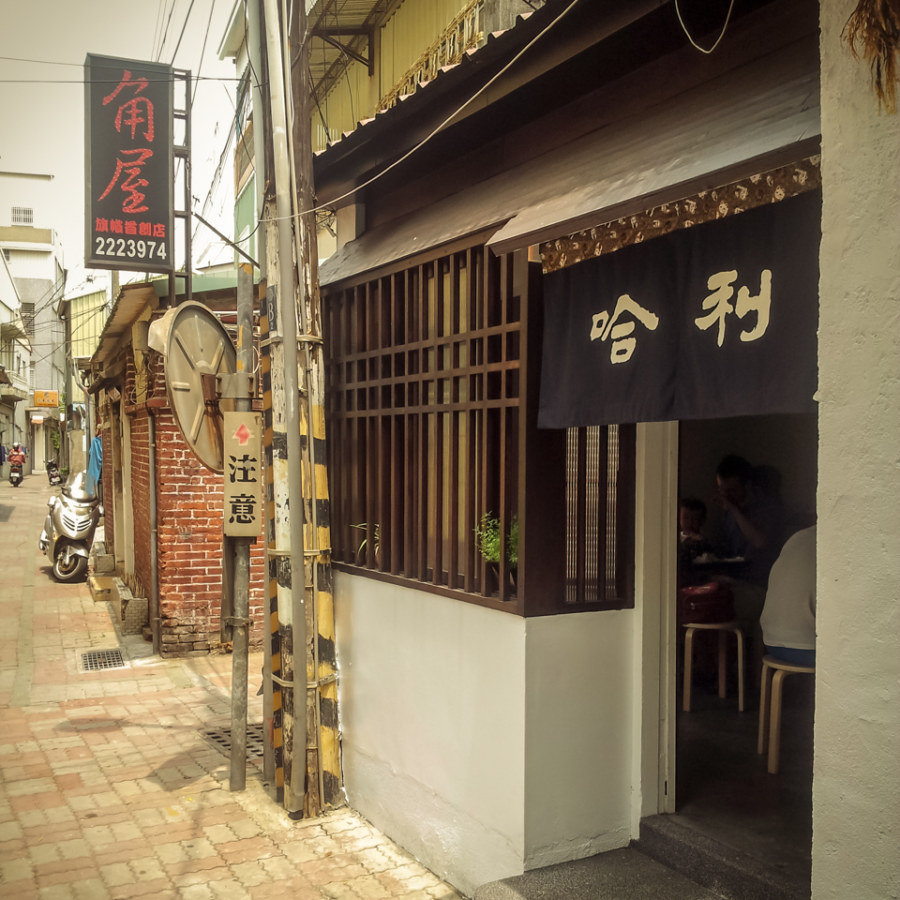

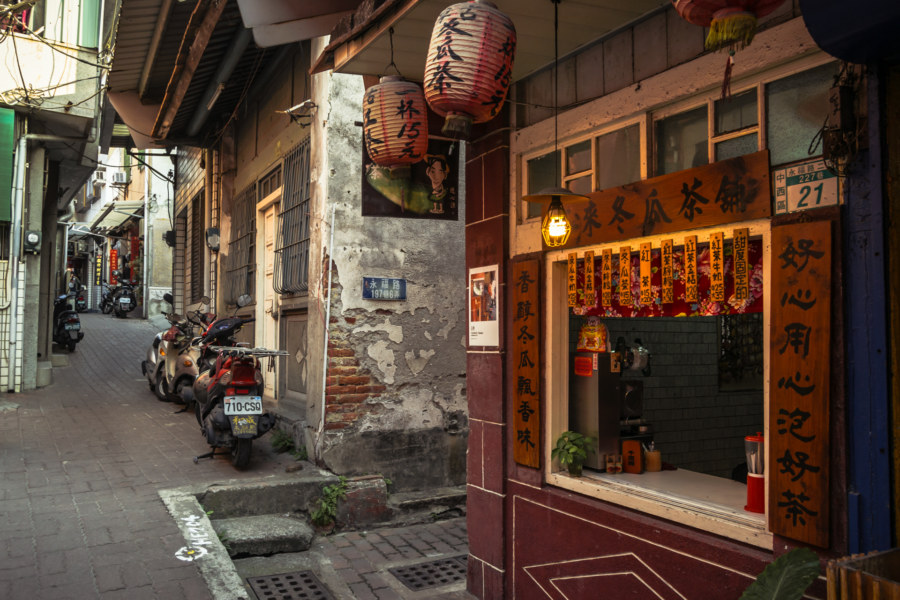
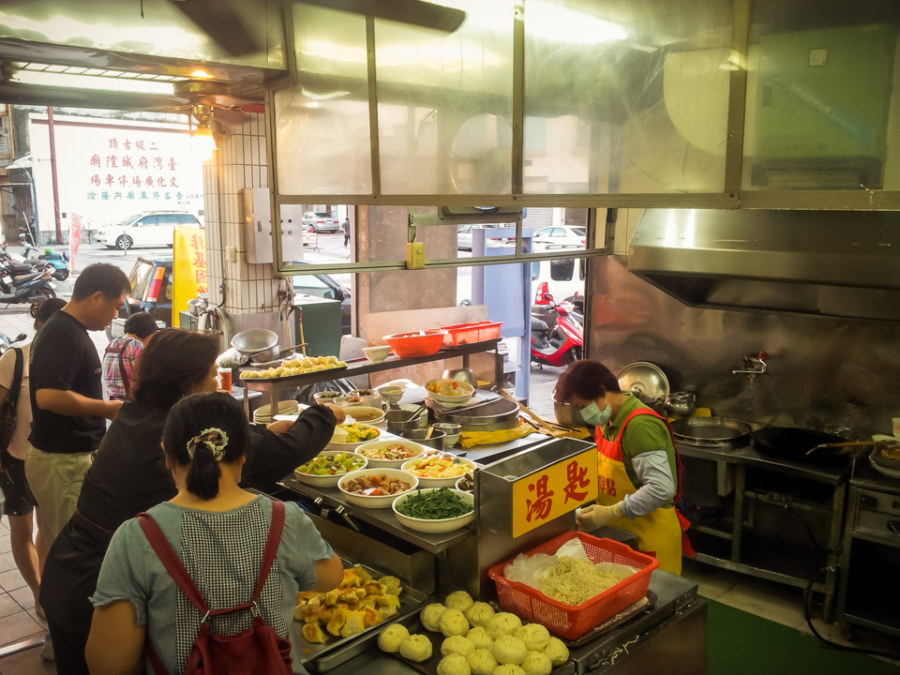
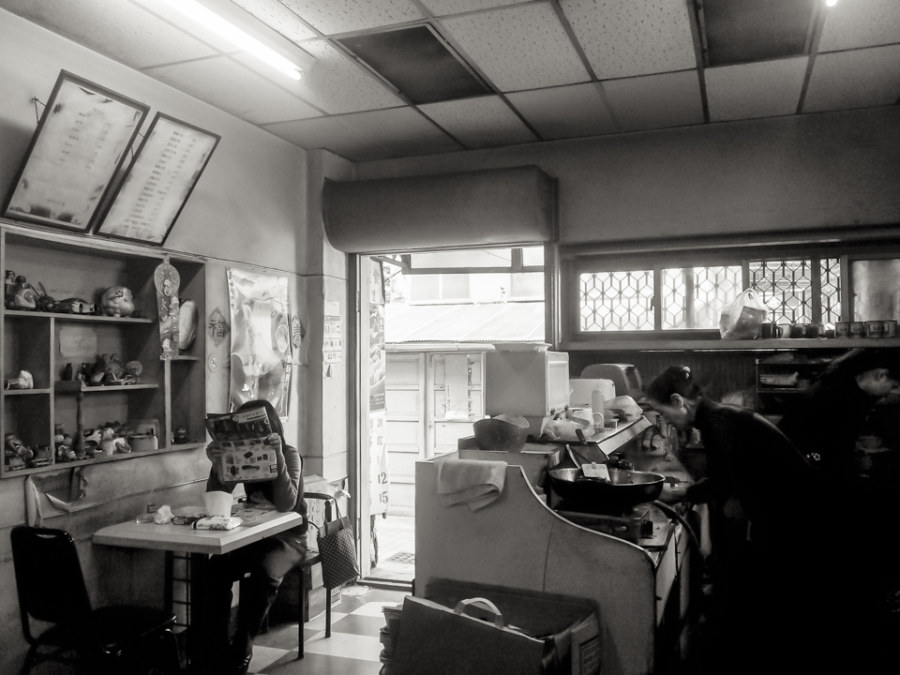
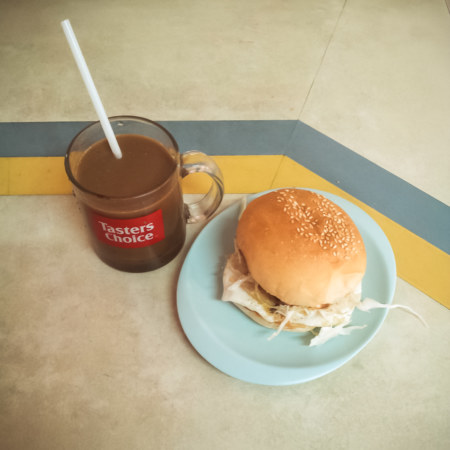
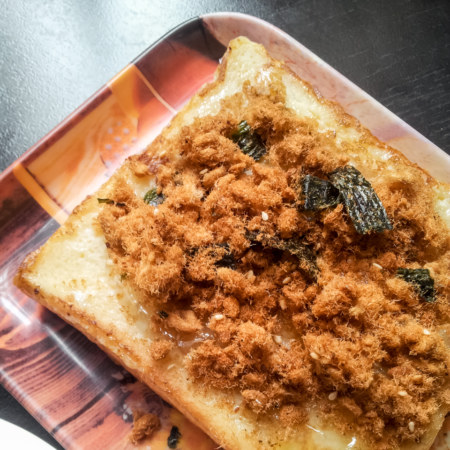
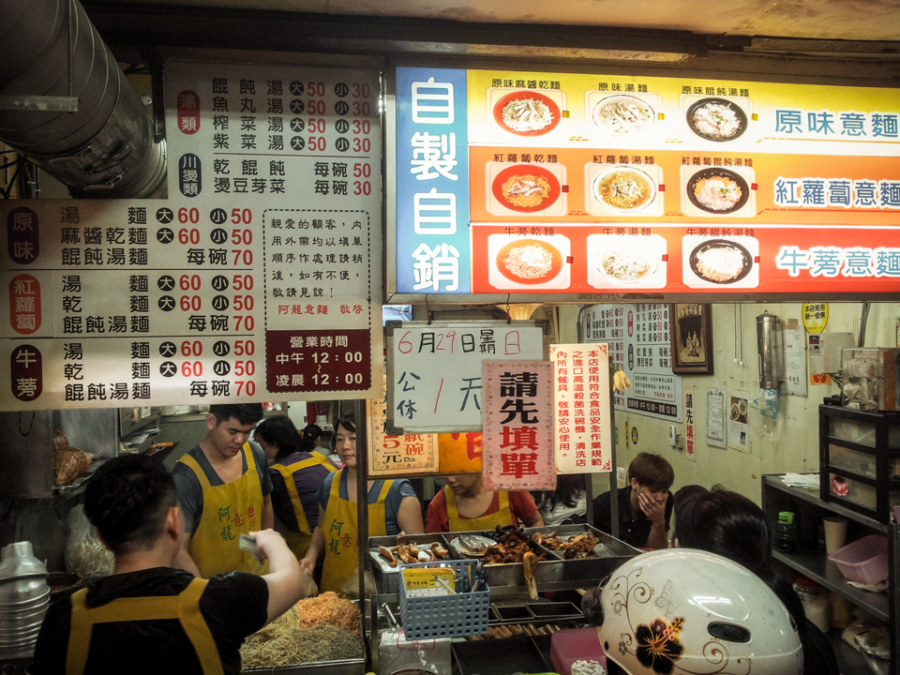
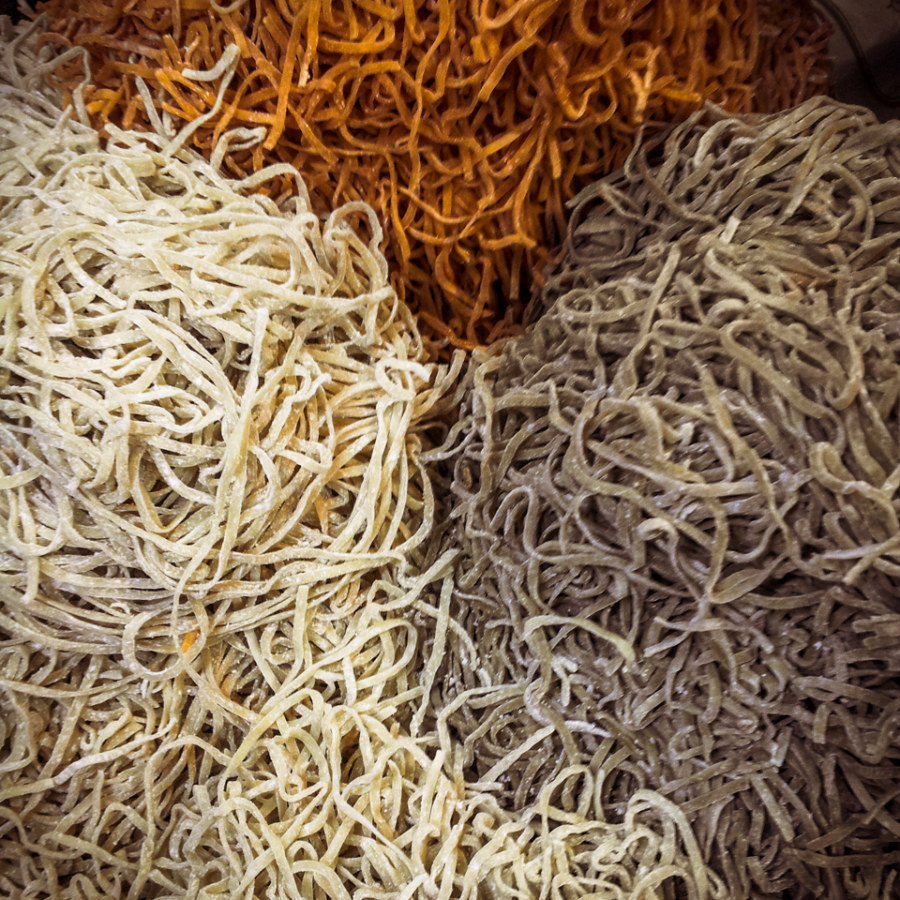
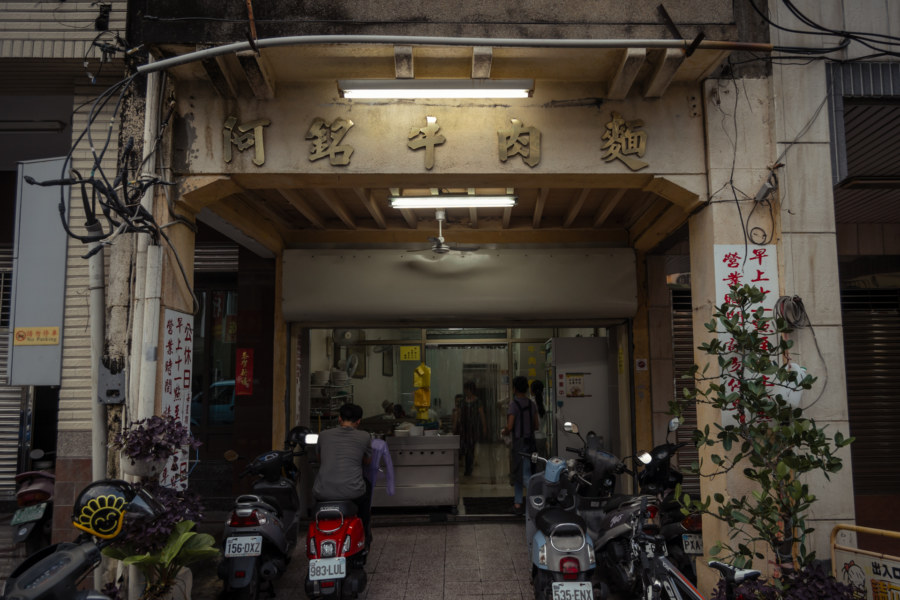
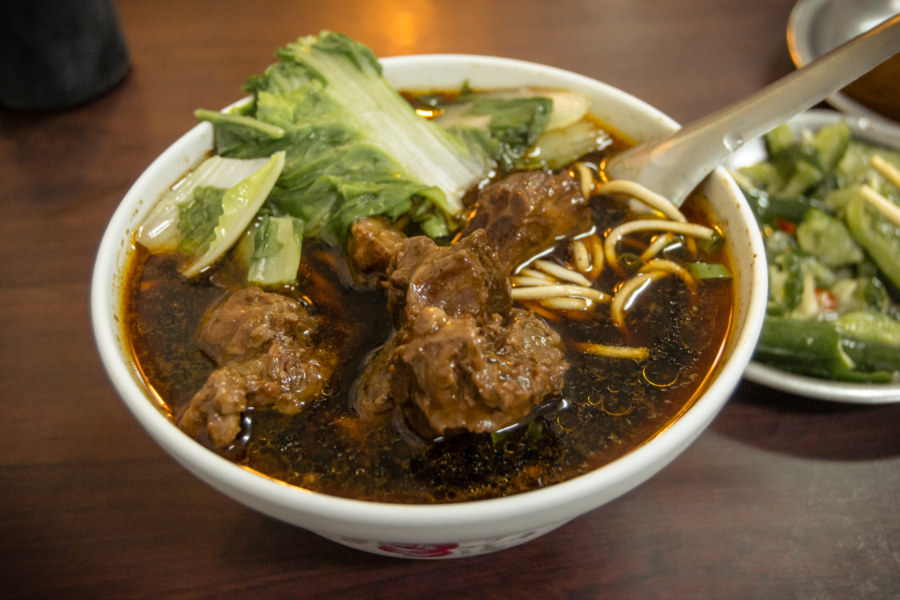
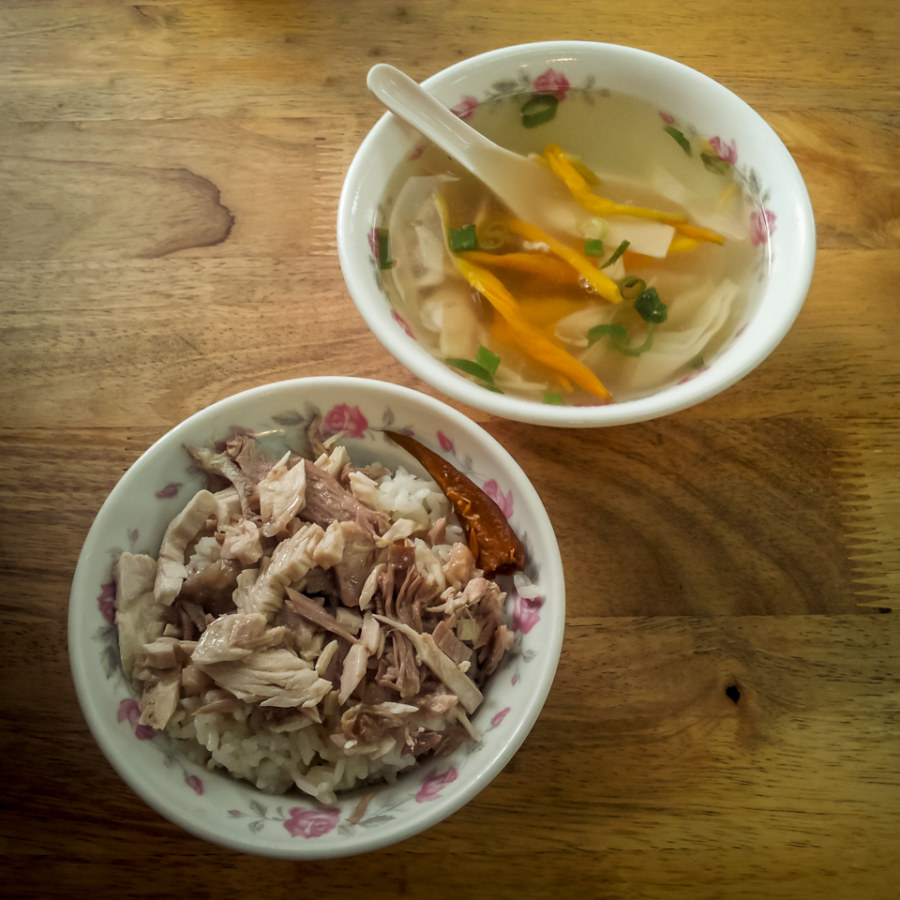

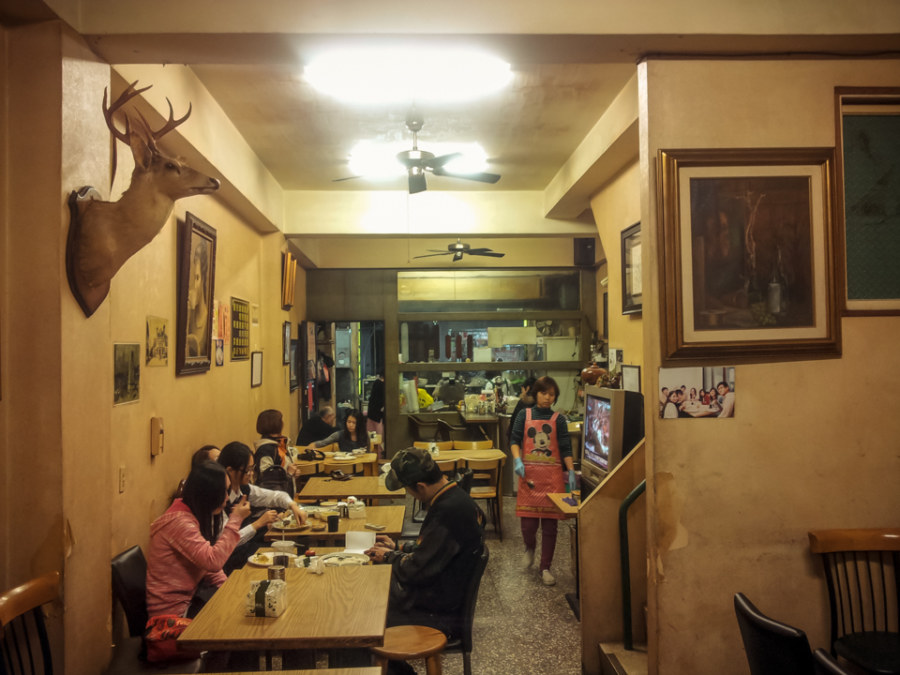
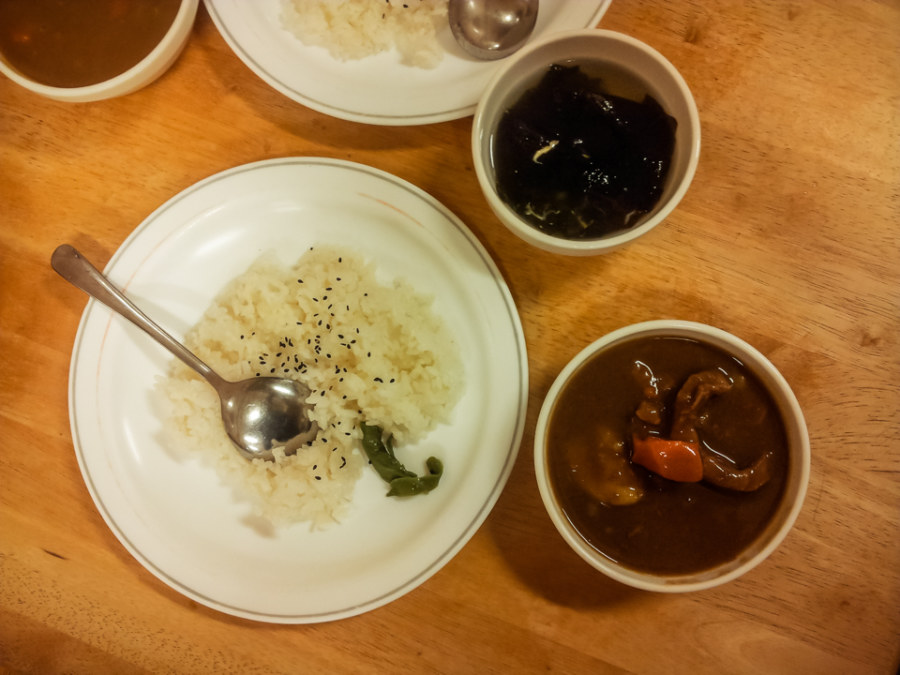
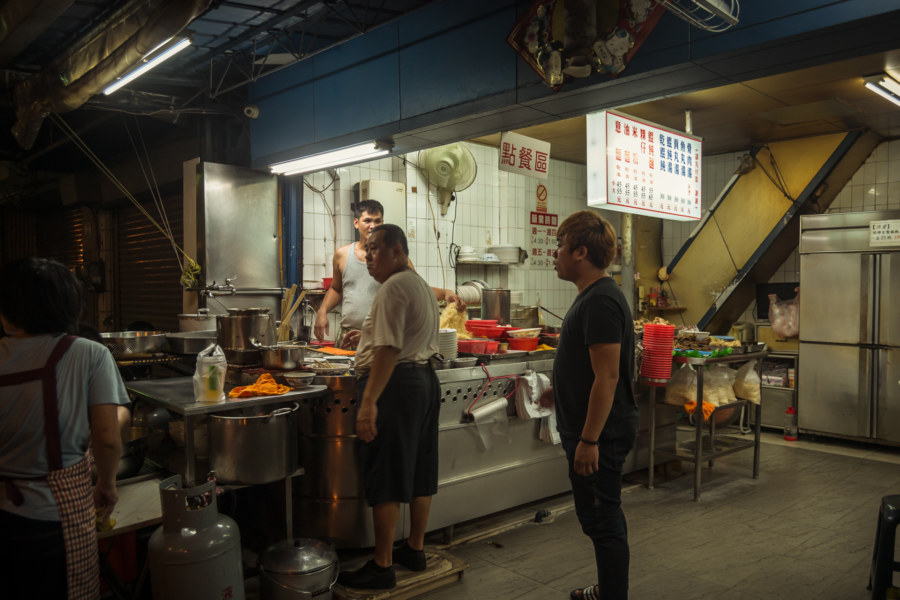
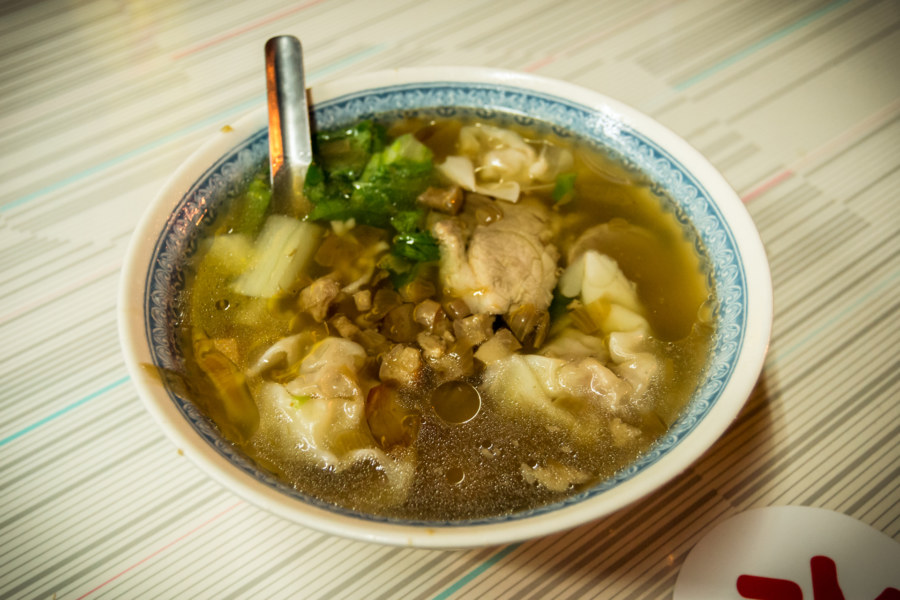
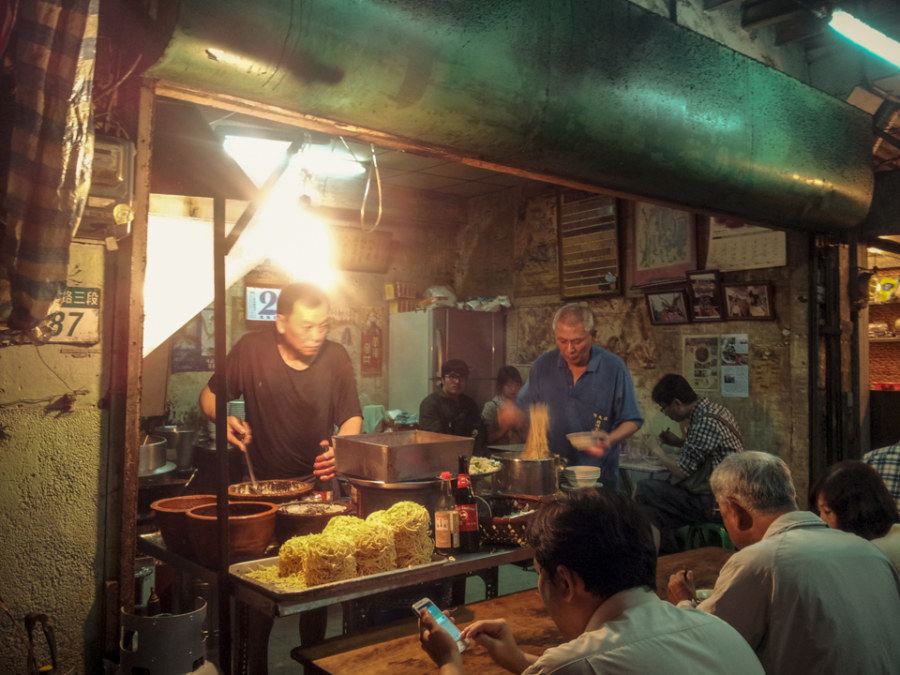



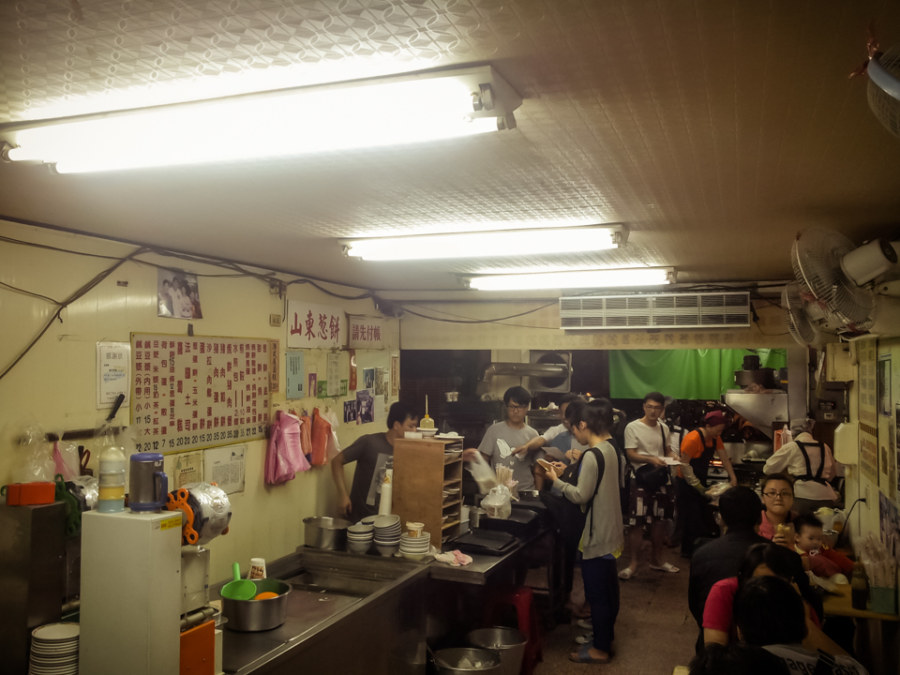
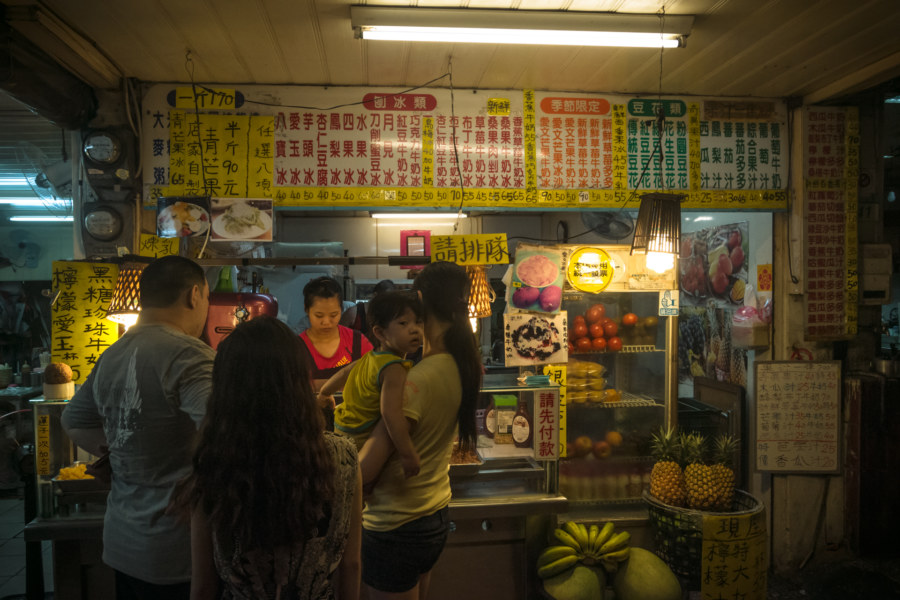




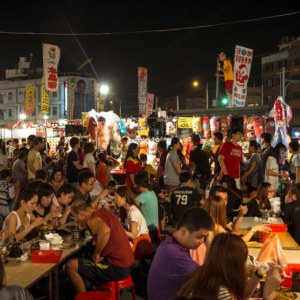

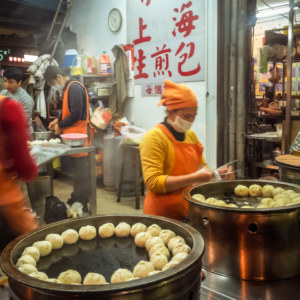
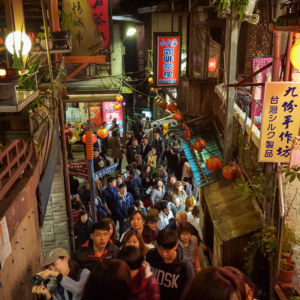
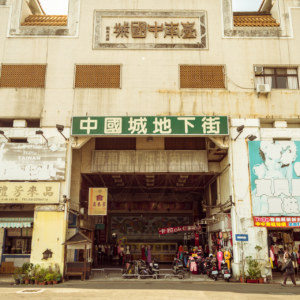

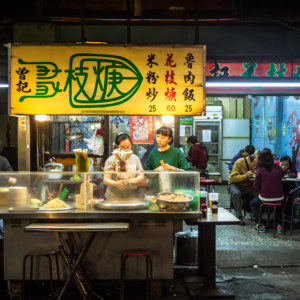
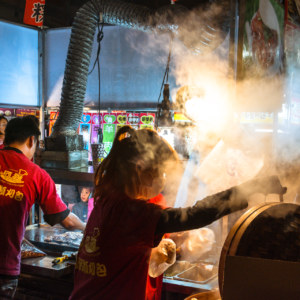
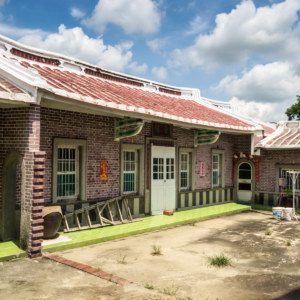
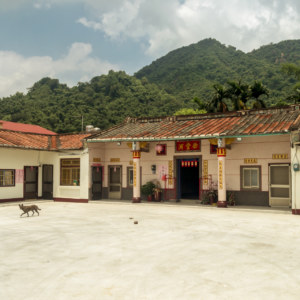
A big thanks for taking the time to compile this! I’ll be making my first visit to Tainan in a couple of weeks and this list is perfect. The photos of the restaurant will be a big help in making sure I’m at the right spot. And thanks too for adding the pinyin, even if folks aren’t likely to understand my butchered Mandarin. Looking forward to checking out the rest of your Tainan (and Taipei) posts!
Thanks for this wonderful recording. I am so touched!
What you have recorded just made me remind of my hometown and made me miss Tainan so much.. (I am from Tainan but studying abroad now.)
It is my first time to read this kind of personal article about Tainan’s food in English version, giving praise to how wonderful food in Tainan is, and even shared some useful ‘tips’ of exploring (and ordering) Tainan’s food (laughed by the time I read about the pronunciation between 乾 and 幹.. Lol.)
Among the lists my personally favorite one is 勝利早點.. honestly I went to have a ‘big’ meal before I went abroad this summer, thought that I would have be satisfied and would have never thought of its wonderful food (at least by the end of this year), but in vain when I read this article haha.. I miss 勝利早點 so much now!!!!
I am really glad that you enjoyed food in Tainan! Many thanks for this wonderful recording again!!
Yes! I’ve been looking for a food guide to Tainan! I was there once and enjoyed the visit, ate a few snacks but didn’t have the all around food experience that everyone says Tainan is famous for. Will definitely refer to this on a return trip. Thanks!
This is such a great compilation you have here and so organized. Thanks so much for publishing it. I am working on a food project with no knowledge of chinese which is making me highly reliant on local kindness(lucky me) but this is such a great resource. Wish i would have found it sooner. I will be in taiwan another two weeks if you have any updated suggestions would love to hear them. All the best. Happy travels
Great write up! Recently went to Tainan for the first time, and also enjoyed the eel noodles (at the same shop) to my surprise.
Nice article. Appreciated. Heading to Tainan in a couple of days. Love eating :)